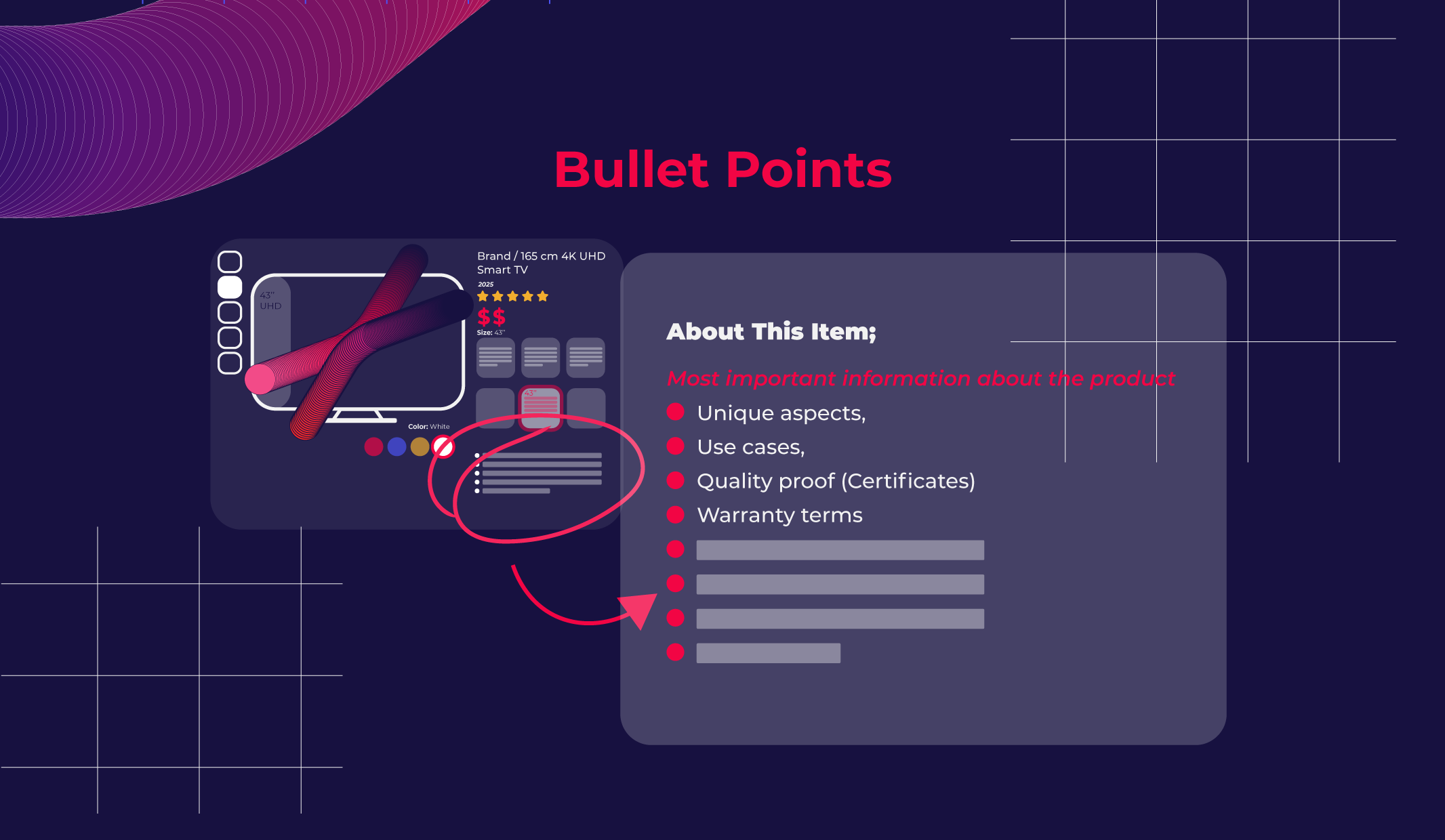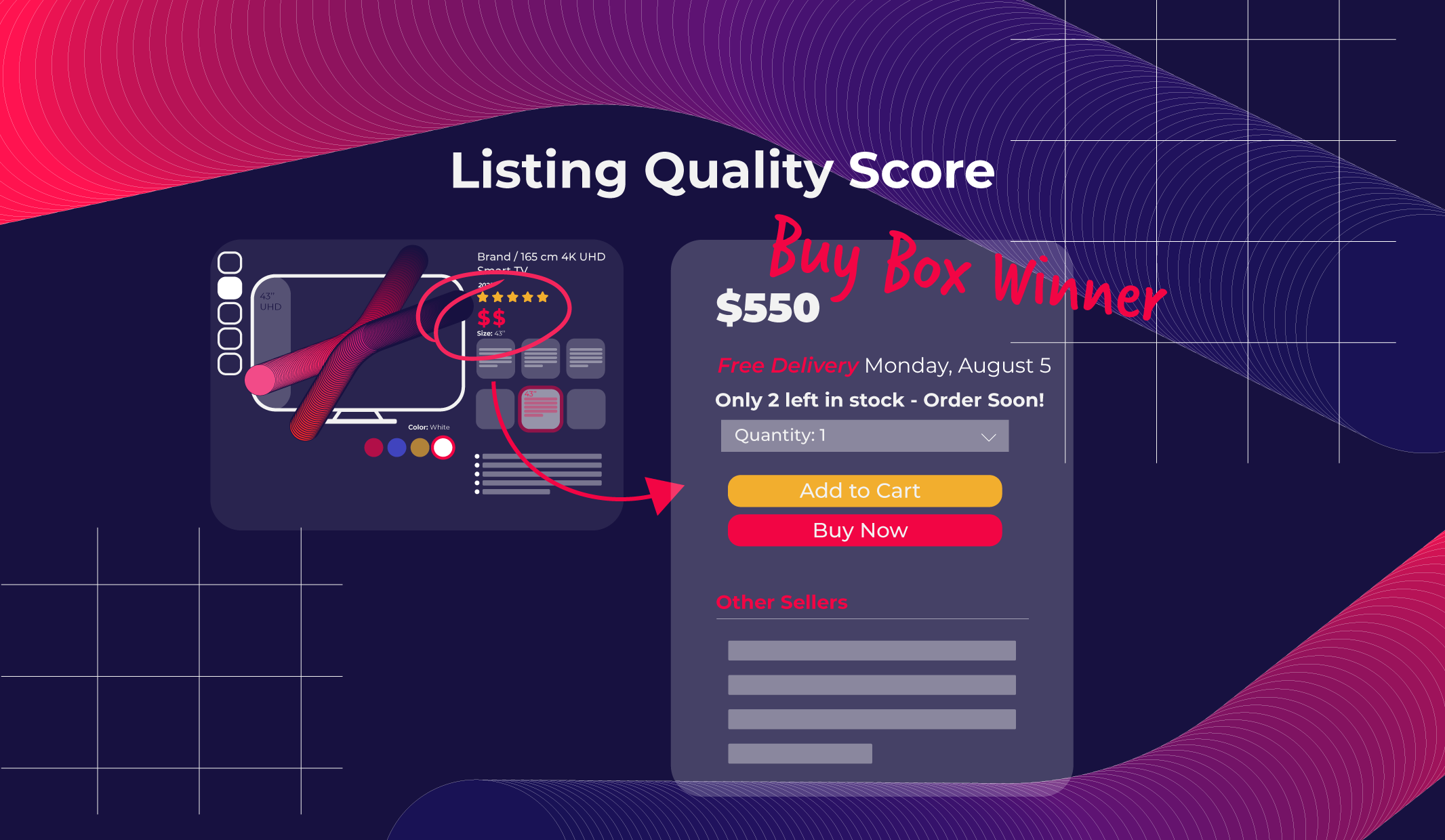Product listings on online marketplaces are a very crucial part of your business and brand, as they serve several important functions. Your listings are the elements that make your brand and products visible to customers, so they appear in customer searches. Additionally, your product page is where you provide the necessary information about your products and brand. Product listings not only make your products visible but also serve as a platform to showcase them.
A product listing can be divided into essential elements, such as the product title, images, description, and bullet points (about this item section). Each element serves a different purpose and is key to your product listings.
Product Title
The product title is one of the very first things a customer sees when they make a search, alongside the product image. And creating a compelling product title is critical for ecommerce, especially in competitive marketplaces like Amazon and Walmart, as they impact both search visibility (SEO) and customer click-through rates (CTR).
A high-converting product title should clearly communicate the most important details, such as the brand name, product type, key features (unique selling proposition), color, size, and material.
The maximum length allowed on Amazon is currently 200 characters; however, keeping the title concise is preferable, as it can be shortened on mobile devices. The requirements for the titles can vary by marketplace. For example, on eBay, the title character limit is 80, while on Walmart Marketplace, it is 150. For Amazon, you can check the product title requirements and guidelines page. Also, keep in mind that each marketplace has different policies and requirements for listing formats.
Pro Tips for Creating Compelling Product Titles

- Create category-specific listing title templates, as each category has distinct purchase drivers. For example, while the electronics category requires more key technical specs, home appliances may require material information.
- Depending on the marketplace you sell in, customize templates to meet each marketplace’s specific requirements (e.g., maximum character limits, no special symbols) and customer profiles.
Title templates also serve as a checklist for the seller, establishing consistency and ensuring that your most critical keywords are always present.
For example, in the electronics category: [Brand] [Model Name] [Product Type] - [Key Spec 1] [Key Spec 2] [Capacity/Color].
- Optimize your titles for the mobile experience. Put the most critical keywords and unique selling proposition at the very beginning.
Hidden SEO: The Power of Backend Search Terms
While the customer-facing elements, such as the title and bullet points, are critical, maximizing visibility also relies on backend search fields (called "Generic Keyword" on the Amazon Seller Central product details page). These fields are invisible to the customer, but when entered relevantly by the seller, they are used by the marketplace algorithm to index your product for relevant searches.

Product Images
Product titles help get your brand found, but it's the images that drive conversions. Once your product is discovered, the next step is to create compelling images that effectively persuade your prospects.
Major marketplaces often require the main image to have a white background with only the product featured. But in other images, you can show your product's features and areas of use.
Lifestyle images let the buyer see the product in its intended use case, detail shots help the user get granular information about the product's unique features or materials, and infographics translate technical specs into easily understandable visuals.
Craft your product visuals based on the needs and expectations of your target customer segment.
Bullet Points (About This Item/Key Product Features)

Bullet points in your listing are the first block of text most shoppers actually read. Bullet points appear in your product page next to the images and under the title & price section on Amazon. However, this section may appear differently on various marketplaces. For instance, on Walmart, you can see a button and a separate menu that opens for specifications, and a button for full item details under the "About this item" section.
Since these usually appear at the top of your product page, it’s quite important to optimize and dedicate each bullet point to a specific function in the customer’s decision-making process.
Write the solution the product provides to the pain point of the customer, unique aspects, use cases, quality proof (certificates), and warranty terms of your product. In bullet points, provide the most important information about your product in a concise and clear manner. For the requirements, you can visit Amazon’s Product Bullet Points Requirements page.
Don't forget to utilize shorter bullet points that are easy to scan on mobile marketplace apps.
Product Description
Product description is another essential part of your product listings. In the descriptions section, you can provide more details about your product and inform customers. Such as what’s included, benefits, and important aspects of the product.
While this blog post provides general information, the requirements and rules, field names, and other aspects of product listings can differ across online marketplaces, as we mentioned above. For example, Product detail page rules for Amazon can be found here, and the product details policy of Walmart can be found here
Rich Media
Although rich media isn’t available in all online marketplaces, it is an important aspect of a product listing. In this context, rich media refers to additional videos, images, interactive elements, and related content. For example, on Amazon, you can find A+ content, which falls under this category and is a valuable tool. This feature allows you to add more details about your product, showcase your brand, or even include comparison charts for customers. Or on Walmart, you can use 360° spin images to showcase your product from every angle to help customers decide, and videos to provide more information. According to Amazon, “Basic A+ content has been shown to increase sales by up to 8%, and brands who utilize Premium A+ content can see growth as much as 20%.”.
Rich media lets you showcase your products more effectively and provides more information in different formats, making your listings more user-friendly for customers. Rich media can also help with SEO as it’ll allow you to place more target keywords on your listings. Also, some rich media on certain marketplaces may let you add content, such as FAQs. A section that you can utilize to answer the most common questions you receive for your products, and include more information.
Listing Quality Score

While the topics we mentioned above are important elements of a product listing, other factors can affect overall product listing quality, such as reviews, pricing, shipping, and content quality. (The elements mentioned above) For instance, Walmart lists 5 categories for listing quality: published and in stock, ratings & reviews, shipping, content quality, and price competitiveness, while Amazon uses a different formula for product listing quality score. Also, in Seller Central, you can find recommendations for improving the quality of your listings under the Manage All Inventory tab, and check best practices for listing quality here.
As we discussed, many elements on a product listing page can affect the overall quality of a listing, from pricing to the product description. Better product listings create a better customer experience, potentially increase conversions, and improve your products’ visibility on marketplaces. For example, a product listing with incorrect specifications can be filtered out when a customer uses a filter, or it may appear in a different place than intended. As simple as it may seem, these small details on product listings can affect your business.
As your brand grows and starts selling across different platforms, dealing with the varied requirements and marketplaces can become really time-consuming. Ecomglue Ecommerce Agency offers Marketplace Setup and Listing Management services. We tailor your product listings and content to meet the unique requirements of each marketplace.
Below are the Marketplace Setup and Listing Management services Ecomglue Ecommerce Agency offers.
Contact Ecomglue Team